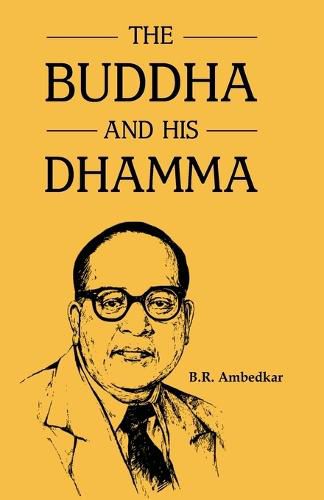The Buddha and His Dhamma
B R Ambedkar

The Buddha and His Dhamma
B R Ambedkar
This title is printed to order. This book may have been self-published. If so, we cannot guarantee the quality of the content. In the main most books will have gone through the editing process however some may not. We therefore suggest that you be aware of this before ordering this book. If in doubt check either the author or publisher’s details as we are unable to accept any returns unless they are faulty. Please contact us if you have any questions.
Indications of a growth in the volume of interest in Buddhism are noticeable in some sections of the Indian people. Along with it there is naturally a growing demand for a clear and consistent statement of the life and teachings of the Buddha. Anyone who is not a Buddhist finds it extremely difficult to present the life and teachings of the Buddha in a manner which would make it a consistent whole. Depending on the Nikayas, not only the presentation of a consistent story of the life of the Buddha becomes a difficult thing and the presentation of some parts of his teachings becomes much more so. Indeed it would not be an exaggeration to say that of all the founders of religions in the world the presentation of the life and teachings of the founder of Buddhism presents a problem which is quite puzzling if not baffling. Is it not necessary that these problems should be solved and the path for the understanding of Buddhism be made clear? Is it not time that those who are Buddhists should take up these problems at least for general discussion and throw what light they can on these problems ? With a view to raise a discussion on these problems I propose to set them out here. The first problem relates to the main event in the life of the Buddha, namely, Parivraja. Why did the Buddha take Parivraja? The traditional answer is that he took Parivraja because he saw a dead person, a sick person and an old person. This answer is absurd on the face of it. The Buddha took Parivraja at the age of 29. If he took Parivraja as a result of these three sights, how is it he did not see these three sights earlier? These are common events occurring by hundreds and the Buddha could not have failed to come across them earlier. It is impossible to accept the traditional explanation that this was the first time he saw them. The explanation is not plausible and does not appeal to reason. But if this is not the answer to the question, what is the real answer? 1. Siddharth Gautama - How a Bodhisatta became the Buddha, 2. Compaign of Conversion, 3. What the Buddha Taught, 4. Religion and Dhamma, 5. The Sangh, 6. He and His Contemporaries, 7. The Wanderer’s Last Journey, 8. The Man who was Siddharatha Gautama, 9. Epilogue.
This item is not currently in-stock. It can be ordered online and is expected to ship in 7-14 days
Our stock data is updated periodically, and availability may change throughout the day for in-demand items. Please call the relevant shop for the most current stock information. Prices are subject to change without notice.
Sign in or become a Readings Member to add this title to a wishlist.


